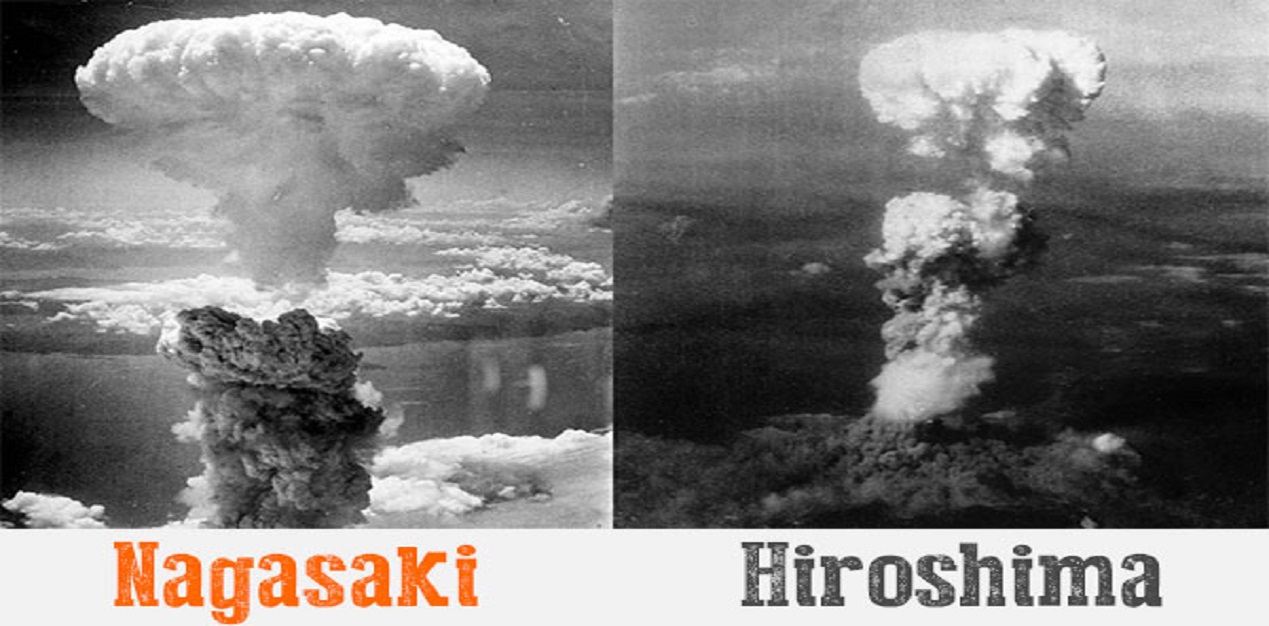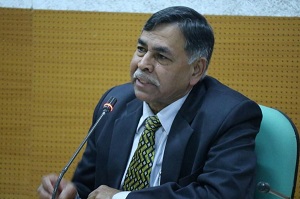Prime Minister Fumio Kishida’s tasks are cut out. He has to navigate between his anti-nuclear position as a native of Hiroshima and adopting a pragmatic approach on the country’s security. When he addressed the NPT Review Conference in New York, he stressed on striking a balance between the harsh reality of the prevailing security environment and a world without nuclear weapons. What Kishida lacked was elaborating the details of the roadmap he has in mind for an ideal world. With China’s assertiveness on a host of regional issues, the latest being the escalating tensions on the Taiwan Straits, and North Korea’s relentless surge in nuclear weapons developments, the Ukraine crisis seems to have breached the threshold of a nuclear war looking real. What was missing from Kishida’s address to the NPT Nuclear Review Conference was a pragmatic discussion on deterrence so that a nuclear-free world could be realizable.
In view of the worsening security dynamics, one feels tempted to endorse the saying that “to remain prepared for the war is the best means of preserving peace”. It is unclear if Kishida has this in mind. Even if he is not because of his staunch anti-nuclear stance, there could be compelling reason for one to link the desire of the ruling coalition to amend Article 9 of the Constitution with a view to make Japan a normal state. If that objective is realisable, reviewing the country’s nuclear stance could be the next logical step.
Making a comparison with the current crisis in Taiwan when China threatens to gobble up the island nation by the use of force, Elbridge Colby writes in the Foreign Affairs that America must prepare for a war over Taiwan. Colby further argues that to remain ready is the best way to prevent a fight with China. Such an argument appeared following House Speaker Nancy Pelosi’s visit to Taiwan in early August and Beijing’s response to the visit. Colby observes: “A war with China over Taiwan has gone from what many regarded as a remote scenario to a fearfully plausible one”.[1] Despite such threatening scenario, there are doubts if the US shall honour its commitments as the security provider if a conflict breaks out over Taiwan. Japan’s situation could be more vulnerable than that of Taiwan.
Seen from this perspective, sticking to the current narrative of observing the Hiroshima and Nagasaki Day as the way to raise awareness of the horrors of the atomic bomb, while laudable, would be unsustainable despite that pragmatic commitment to peace remains on course as threat perceptions have considerably heightened. It would be an ideal world if the tragedy of Hiroshima and Nagasaki remains the world’s first and last. However, the challenge to bridge the enormous gulf between the ideal and the reality remains huge.
While addressing the Review Conference, Kishida had flagged the concern of another possible catastrophe by nuclear use because of Russia’s aggression against Ukraine. Japan expressed its displeasure and as a form of protest did not invite Russia’s ambassador to the commemoration ceremony in Hiroshima on 6 August. Pre-empting Japan’s position, Russian ambassador Mikhail Galuzin laid flowers at a memorial stone in the Peace Park a couple of days early on 4 August. Though Galuzin categorically mentioned that Russia has no intention to use nuclear weapons, this contradicted open threat by Russian President Vladimir Putin of availing this option.
Even if one reads Putin’s and Galuzin’s observations in between the lines, the truism is that the Ukraine crisis has made nuclear disarmament talks more difficult than before. Kishida’s advisers had advised him not to attend the NPT review conference as they felt that it was unlikely to produce any tangible results and could end in disarray. But Kishida wanted to project himself as disarmament movement’s main guardian and champion of this cause.
Kishida highlighted at the Review Conference his Hiroshima Action Plan, which has five parts: the continued non-use of nuclear weapons; increasing transparency of nuclear capabilities; decreasing global nuclear stockpiles; promoting nuclear non-proliferation and the peaceful use of nuclear energy; and encouraging educational visits to Hiroshima and Nagasaki. In addition, Kishida also sought to build momentum toward the Comprehensive Nuclear Test Ban Treaty by proposing a meeting with leaders of Australia, Germany, and other nations on the sidelines of the U.N. General Assembly session this year. He also set up a $10 million Youth Leader Fund to encourage next-generation leaders engaging in the work of nuclear disarmament and non-proliferation to travel to Japan.[2]
Kishida has a grandiose plan for his nuclear disarmament idea. He plans to hold an international conference of political leaders in November in Hiroshima to heighten momentum towards nuclear disarmament. In May 2023, he has decided to host the G-7 summit in Hiroshima. The idea is that the leaders shall get an opportunity to visit the Hiroshima Peace Memorial Park and museum together at that time and personally feel what an atomic bombing could cause to the people. The graphic depiction of the devastation of peoples whose skins were ripped off, limbs cut off, and other gruesome pictures in the museum is such that any sane human being with pro-nuclear position can instantaneously turn anti-nuclear after an exposure to what an atomic bomb can cause to humanity. The author had a moving experience when he scheduled a visit to Hiroshima Peace Park and Museum during his first academic assignment in Japan in 1979.
This time the NPT Review Conference shall run till 26 August, discussing three broad issues: nuclear disarmament, non-proliferation, and the peaceful use of nuclear power. As Foreign Minister of Japan, Kishida had attended the previous NPT review conference in 2015, the first to do so in a decade. That time, no document was issued as there were differences between nuclear and non-nuclear powers. The NPT Review Conference in 2022 was delayed for two years because of Covid-19 pandemic. Like last time, if this year’s conference also fails to issue a document, the future of NPT as the appropriate forum for dealing with nuclear disarmament shall come into question.
Kishida’s aim to realise a non-nuclear world is laudable but the task is daunting and challenging. Kishida was also first Japanese Prime Minister to attend the Non-Proliferation Disarmament Initiative (NPDI) meeting, where he urged for a meaningful outcome. Since his ultimate goal is to realise a non-nuclear world, he seeks to work with other nuclear powers for an agreement. There is a contradiction here in Japan’s nuclear stance. The Treaty on the Prohibition of Nuclear Weapons (TPNW) was adopted in 2017 but Japan is yet to ratify it. Japan also did not attend the first meeting as an observer.
Kishida therefore, often comes under criticism from NGOs and atomic bomb survivors who question why Kishida maintains distance from the TPNW but only talks about his commitment to eliminate nuclear weapons by keeping dialogue open with the nuclear powers. That remains the real challenge for Kishida[3], as his vision is perceived by critics more idealistic than pragmatic. For Kishida and also probably for the rest of Japan’s political leaders, there is no realistic alternative for Japan. Everyone knows that Japan’s security remains vulnerable despite it is protected by the US nuclear umbrella as there are three nuclear powers in its neighbourhood – China, North Korea and Russia – posing threats to Japan’s security.[4] Japan has problems with all three states: with Russia over Kurile Islands, with China over Senkakus, and with North Korea over the abduction issue and there is little possibility of any resolution with any of the three. The onus lies on Kishida to define and explain in clear terms what his plans are and how those can be implementable.
Endnotes :
[1]Elbridge Colby, “America Must Prepare for a War Over Taiwan”, Foreign Affairs, 10 August 2022, https://www.foreignaffairs.com/united-states/america-must-prepare-war-over-taiwan?utm_medium=newsletters&utm_source=twofa&utm_campaign=China%E2%80%99s%20New%20Vassal&utm_content=
[2] “Kishida Speech at NPT Conference: Giving Up on Disarmament Not an Option”, Japan Forward, 2 August 2022, https://japan-forward.com/transcript-kishida-speech-at-npt-conference-giving-up-on-disarmament-not-an-option/
[3]Keishi Nishimura, “Kishida pushed against his inner circle to attend NPT meeting”, Asahi Shimbun, 1 August 2022, https://www.asahi.com/ajw/articles/14684647
[4]Mina Pollmann, “Kishida Becomes First Japanese PM to Attend NPT Review Conference”, The Diplomat, 5 August 2022, https://thediplomat.com/2022/08/kishida-becomes-first-japanese-pm-to-attend-npt-review-conference/
(The paper is the author’s individual scholastic articulation. The author certifies that the article/paper is original in content, unpublished and it has not been submitted for publication/web upload elsewhere, and that the facts and figures quoted are duly referenced, as needed, and are believed to be correct). (The paper does not necessarily represent the organisational stance... More >>
Image Source: https://cdn.countercurrents.org/wp-content/uploads/2016/08/hiroshima-nagasaki.jpg










Post new comment